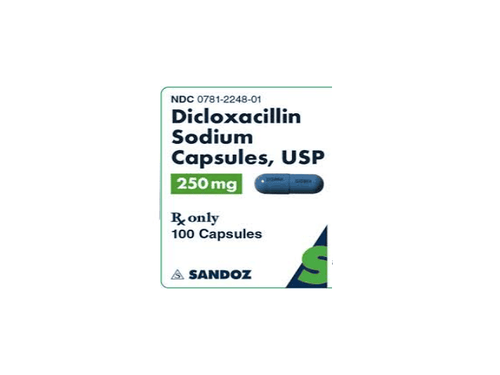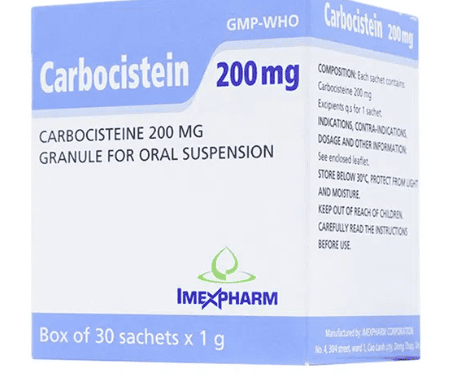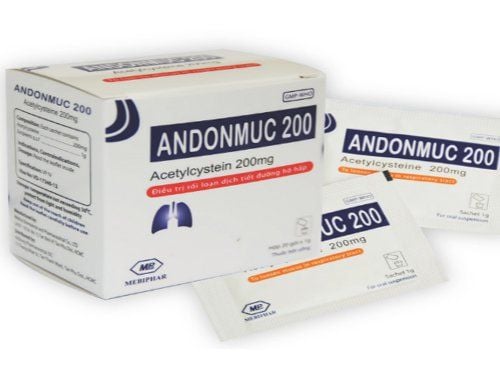This is an automatically translated article.
Paxirasol medicine contains Bromhexine 8mg which belongs to the group of drugs that have effects on the respiratory tract. Paxirasol is indicated in the treatment of respiratory diseases with increased sputum secretion and difficulty in expectoration such as acute and chronic bronchitis, forms of chronic obstructive pulmonary disease...
1. Mechanism of action of the drug Paxirasol
Paxirasol 8mg medicine contains the compound Bromhexin hydrochloride which has the effect of regulating and reducing mucus in the respiratory tract. Due to the activity of synthesizing and breaking down mucopolysaccharide acid fibers, Paxirasol can make sputum thinner and less viscous. Accordingly, Paxirasol makes it easier to loosen phlegm, so sputum from the bronchi is effectively expelled when using the drug.
After taking Paxirasol, Bromhexine component is well absorbed from the gastrointestinal tract. In addition, food may increase the bioavailability of the drug. Paxirasol also has a high binding to plasma proteins ranging from 95% to 99%. Bromhexin compounds are metabolized mainly by the liver. Most of this compound will be excreted by the kidneys as metabolites.
The clearance of Bromhexin in the body may be reduced in some subjects with liver and kidney failure.
2. Indications and contraindications to the use of Paxirasol
What is Paxirasol? Paxirasol is indicated for use in the treatment of diseases such as:
Respiratory diseases with increased sputum secretion and difficulty in expectoration: such as acute bronchitis, chronic bronchitis. Chronic Obstructive Pulmonary Disease, Chronic Respiratory Infection, Pneumonia, Bronchiectasis, However, Paxirasol is also contraindicated in some cases of hypersensitivity to its components. In particular, pregnant and nursing women should not use Paxirasol.
3. Dosage and how to use Paxirasol
Paxirasol tablets are made into tablets with a strength of 8mg used for adults and children:
For children under 2 years old, do not use Paxirasol, because of the safety and effectiveness of the drug for this subject. has not been clearly defined. For children from 2 to 6 years old, use Paxirasol with a dose of 4mg and use it twice a day. For children from 6 to 12 years old, use Paxirasol with a dose of 4mg and use 3 times a day. For adults and children over 12 years old, use Paxirasol with an oral dose of 8 mg and use it 3 times a day. In the case of bronchiectasis, higher doses can be used and antibiotics are used in combination. However, these cases need to be prescribed by a doctor. For patients with hepatic impairment, the dose should not be changed when only liver failure is present, and in patients with liver failure accompanied by renal failure, the doctor will prescribe changes to suit each specific case. For patients with renal impairment, the dose must be reduced when the patient has severe renal impairment or the dosing interval must be prolonged. The length of treatment depends on the individual case, as well as the duration of symptoms. Paxirasol should be taken after meals and taken with water. Patients should drink plenty of water during treatment to help clear the mucus of Bromhexin easier.
Note: The above recommended therapeutic dose for Paxirasol is for reference only. Therefore, before using Paxirasol, patients need to be prescribed by a doctor.
If the patient has missed a dose of Paxirasol, the missed dose can be used as soon as he remembers. However, if the interval between the missed dose of Paxirasol and the next dose is close enough, the patient can skip the missed dose and take the next dose. Patients should also be careful not to double the dose of Paxirasol, because it can cause drug overdose and unwanted side effects affecting current health.
In case the patient accidentally takes an overdose of Paxirasol than prescribed and shows some signs of unwanted side effects, it is necessary to take the patient to the emergency room at the nearest medical facility to receive treatment. timely medical support, helping patients overcome dangerous situations.
4. Unwanted side effects and some notes of the drug Paxirasol
Using Paxirasol can cause some unwanted side effects such as: stomach pain, nausea and vomiting, digestive disorders, dry mouth, dizziness, diarrhea ...
With some cases In particular, rare side effects related to organ systems may occur:
Nervous system: often symptoms of dizziness, headache, weakness Digestive system: There are symptoms of nausea, vomiting, epigastric pain, diarrhea.. Immune system: including allergic reactions urticaria, facial swelling, lip swelling, tongue swelling, difficulty breathing, angioedema. Paxirasol may interact with other drugs, such as antitussives containing codeine, that interfere with the expulsion of sputum that has been dissolved by the Bromhexin compound. When Paxirasol is used in combination with antibiotics, Bromhexine compounds increase the penetration of antibiotics into bronchial secretions. Therefore, to avoid drug interactions, patients need to strictly follow the instructions to use the drug most effectively.
Follow Vinmec International General Hospital website to get more health, nutrition and beauty information to protect the health of yourself and your loved ones in your family.
Please dial HOTLINE for more information or register for an appointment HERE. Download MyVinmec app to make appointments faster and to manage your bookings easily.













